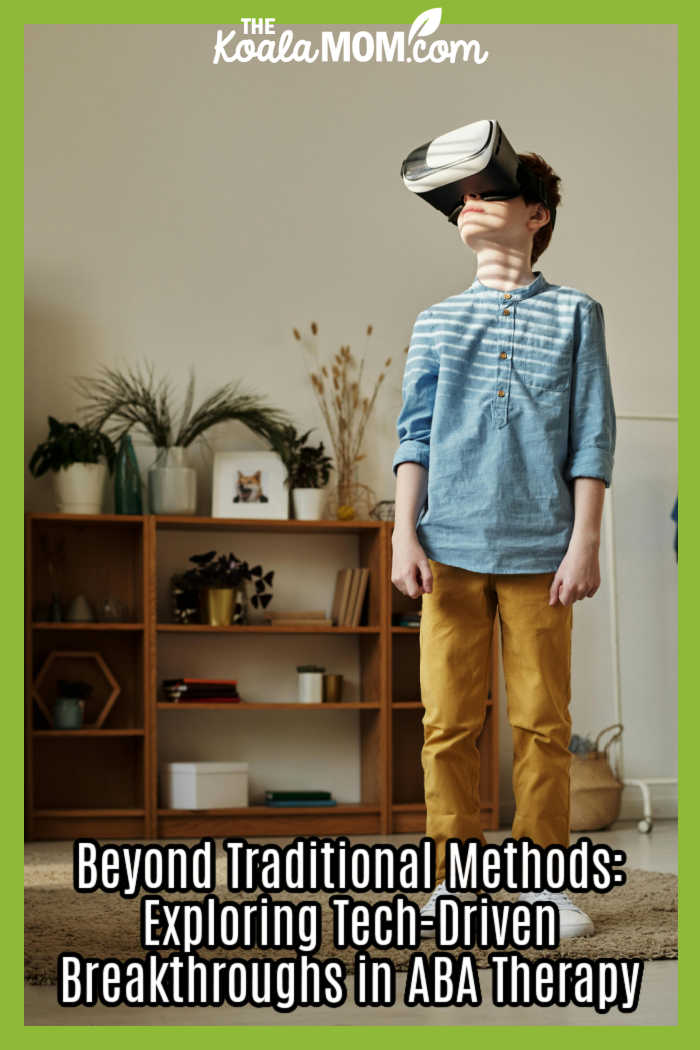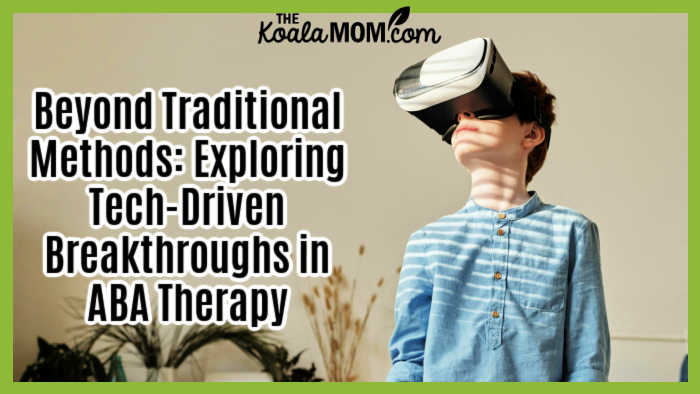Before discussing the breakthroughs tech has brought about in ABA therapy, let’s define what ABA therapy is. Applied Behavior Analysis therapy is an evidence-based interpersonal therapy. It teaches certain skills and behaviors surrounding areas, including communication, motor skills, and daily functioning tasks.
Ideally, ABA therapy aims to encourage children with autism or different individualized needs to develop positive behaviors and nurture their ability to learn independently. For example, an ABA therapist can help autistic children form friendships and improve daily hygiene by studying the child’s behavior closely and suggesting positive changes.

ABA Therapy and Tech Advancements
Applied behavior analysis clinicians once solely relied on direct observations and one-on-one interactions to understand their patients’ behaviors. Today, ABA practice looks different as clinicians continue using technology and modern equipment like computer applications and games, assistive communication devices, tablets, and wearable devices in therapy. With the help of technology, ABA clinicians can make the most of their time with patients and make ABA therapy more accessible for children and their families.
Below are some tech-driven breakthroughs in ABA therapy:
1. Digital Data Collection and Analysis
For ABA therapy to make the most positive impact, clinicians collect accurate patient behavioral data. They analyze it carefully to determine progress towards each goal in a child’s treatment plans and whether adjustments to therapy ought to be made to promote better outcomes. Before harnessing the power of tech in ABA therapy, clinicians used manual data collection methods that involved note-taking using pen and paper.
While these conventional methods served their purpose, they had drawbacks. They were time-consuming, prevented real-time data evaluation, and were prone to errors. According to Stride Autism Centers, practitioners in today’s digital age use electronic methods, for more efficient data collection.
There are several tech tools used for data collection and analysis, like:
- Mobile Applications
Mobile apps are convenient and user-friendly. In applied behavior analysis, mobile apps allow for real-time data collection during therapy sessions, thus increasing efficiency.
- Wearable Devices
Alongside collecting real-time data, smartwatches, and fitness trackers allow therapists to capture valuable health insights. Clinicians can track sleep patterns, heart rate, stress, and steps taken. The data collected with wearable devices helps experts examine patterns in a child’s behavior and then offer a path forward.
- Cloud-Based Solutions
The role of cloud-based solutions in ABA therapy is to manage and store data securely for future analysis. By using cloud storage, ABA experts working with the same patient can share and access data securely from different locations and devices.
2. Personalized Interventions
A study by the National Health Institute says a personalized approach to understanding and treating autism is key to a happy and independent child. That is because each child with autism faces unique challenges needing customized care. ABA therapy targets areas that matter most to your child’s development, thus transforming their lives.
Each child deserves an individualized plan developed to achieve goals and enhance the quality of their life. Today’s ABA experts rely on technology to customize a treatment plan for each patient. One tech advancement supporting personalization in autism care is artificial intelligence.
When leveraged with machine learning algorithms, AI can quickly analyze large volumes of data and detect behavioral patterns quickly and accurately. Accurate patient data allows clinicians to provide precise diagnoses and customize intervention strategies that address the unique needs of each individual.
Further, AI-powered systems can provide real-time feedback for practitioners to monitor a child’s progress. For example, during therapy sessions, a therapist can use an AI-powered mobile app to collect data from the child.
AI can then provide immediate feedback after analyzing all data to help the clinician understand the effectiveness of ongoing treatment. Real-time feedback improves personalized care as it allows for immediate adjustment and optimization of therapy sessions.
3. Improved Social Interaction
Medical News Today highlights that autism affects social interaction and behavior. In social settings, an individual with autism may have trouble starting or engaging in a conversation, responding appropriately to others, and understanding other people’s opinions.
Tech-driven breakthroughs are effective in enhancing each interaction and improving the child’s socialization skills. Tech supporting social engagement for people with autism spectrum disorder (ASD) includes:
- Virtual Reality (VR)
VR technology immerses individuals in an exciting world outside of their own, allowing them to prepare for unfamiliar experiences. Therapists can leverage virtual reality in applied behavior analysis to help patients with autism better connect with their peers and the world around them.
Recent programs in the world of VR-assisted therapy include Floreo. Floreo works with a smartphone or VR headset where young people can practice social skills, communication, and behavioral regulation. The co-pilot mode provides assistance and positive reinforcement throughout the lessons to help learners practice situations like crossing the street, interacting with law enforcement, navigating TSA at the airport, and more.
- Social Robots
Using robots in ABA therapy stimulates engagement in autistic children, redirecting their focus to the task at hand. In a study by Yale researchers, robot-guided activities allow children to improve their performance in emotional understanding and seeing other people’s perspectives.
- Gamification
ABA professionals install games in therapy apps to promote fun, relaxing learning experiences for children. They can also easily collect the child’s information and interactively promote social skills.
4. Telehealth Platforms
The transformation brought about by technology in healthcare is hard to ignore. Imagine connecting with your child’s therapist when you are at home or away on vacation. That is how fantastic telehealth and remote service platforms are.
For ABA therapy patients, telehealth systems enhance treatment accessibility regardless of location. Patients can connect with their clinician remotely using tech equipment like laptops, smartphones, or tablets with a specialized ABA app and video conferencing tools.

Conclusion: ABA Therapy Tech-Driven Breakthroughs
The transformation influenced by tech in healthcare, including ABA therapy, is tremendous. In recent years, advanced technologies, including AI and machine learning, virtual reality, wearable devices, and mobile apps, have made significant breakthroughs in applied behavior analysis (ABA). ABA experts can efficiently collect and analyze data through mobile apps and wearables.
AI has also helped streamline the customization of treatment plans for children and adults with autism, while virtual reality, robots, and gamification improve social skills. Mobile applications and video conferencing software make telehealth possible, ensuring patients connect with ABA therapists remotely.
Brad Zelinger is the Founder and CEO of Stride Autism Centers.

No Responses Yet